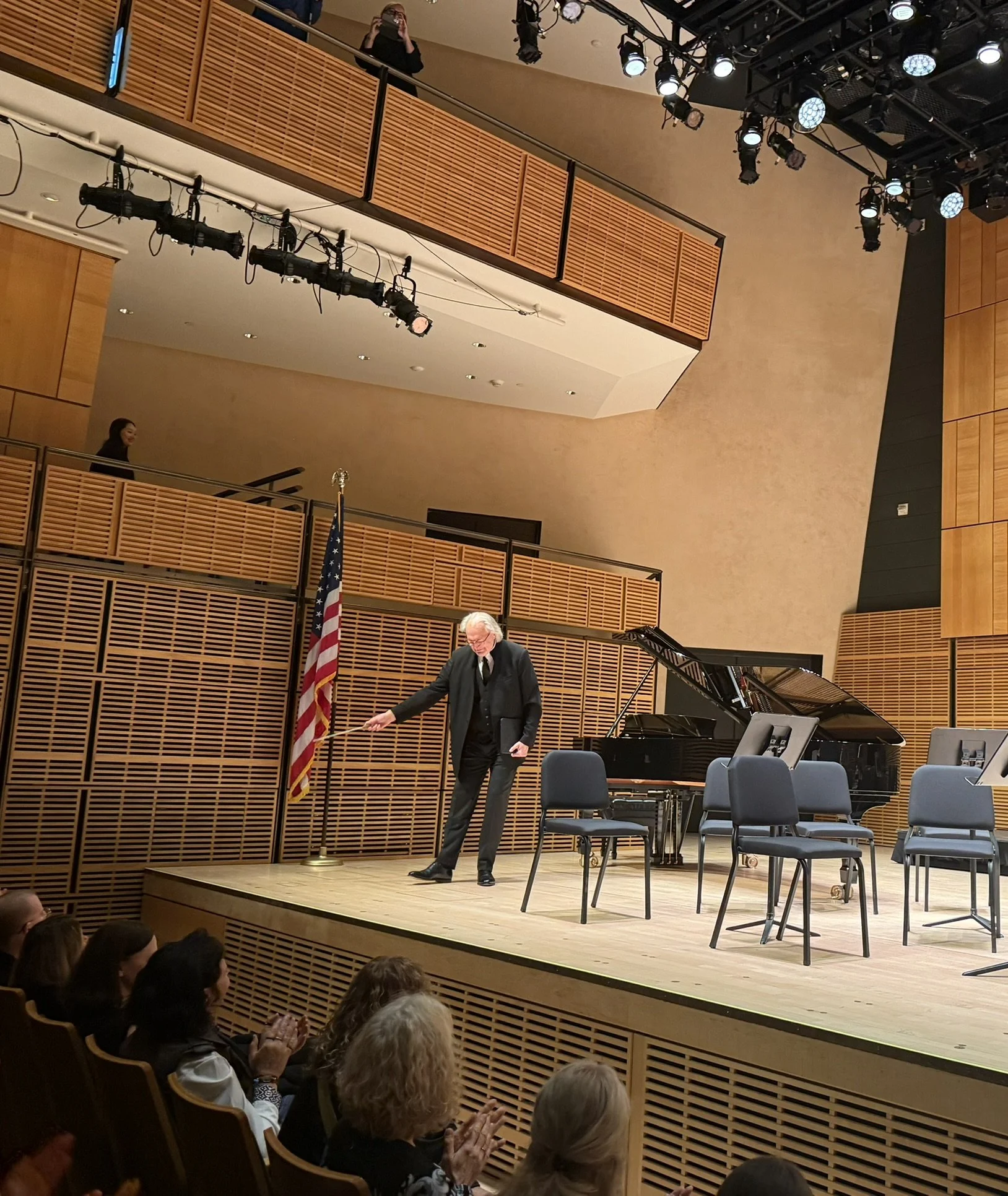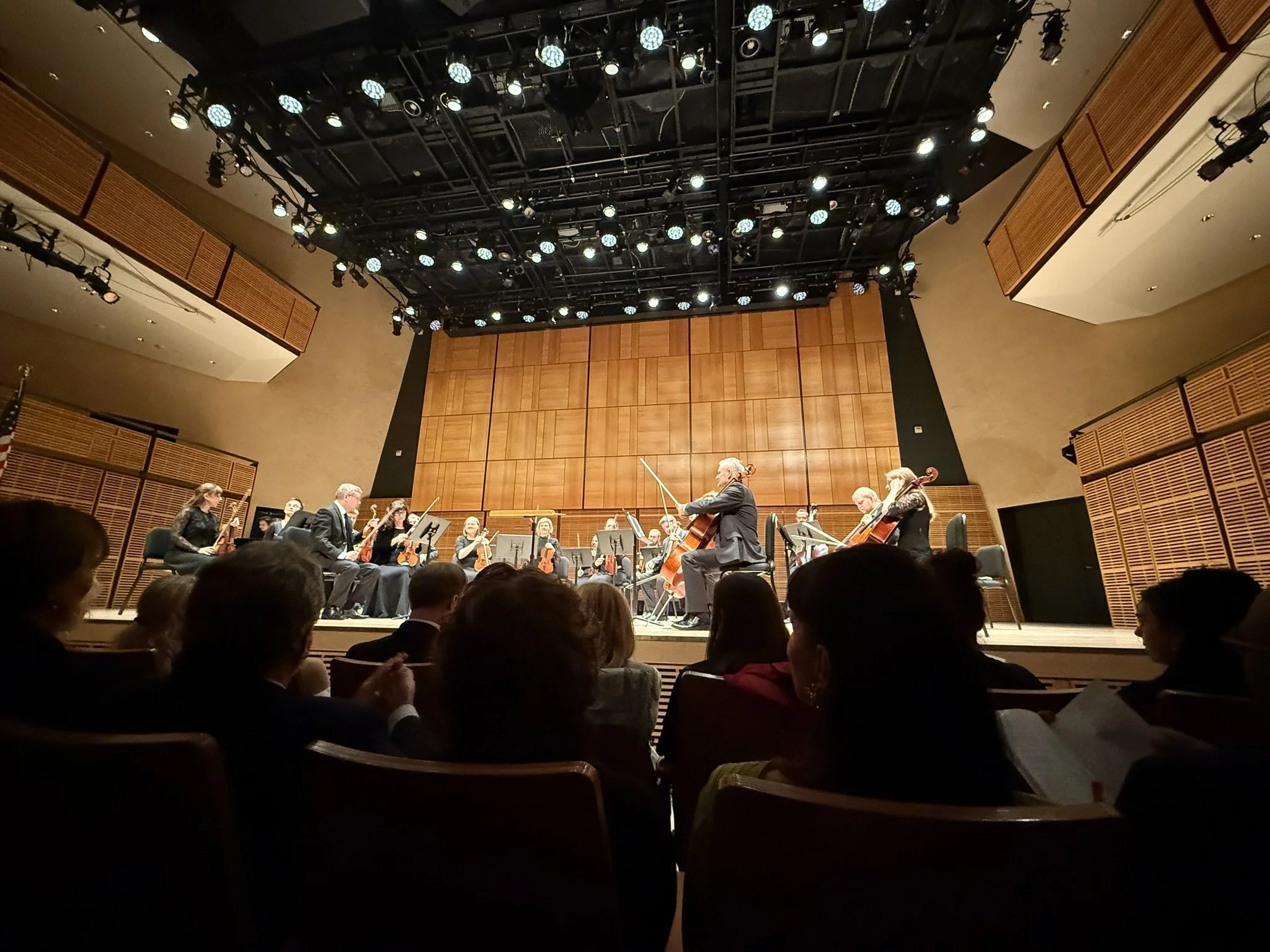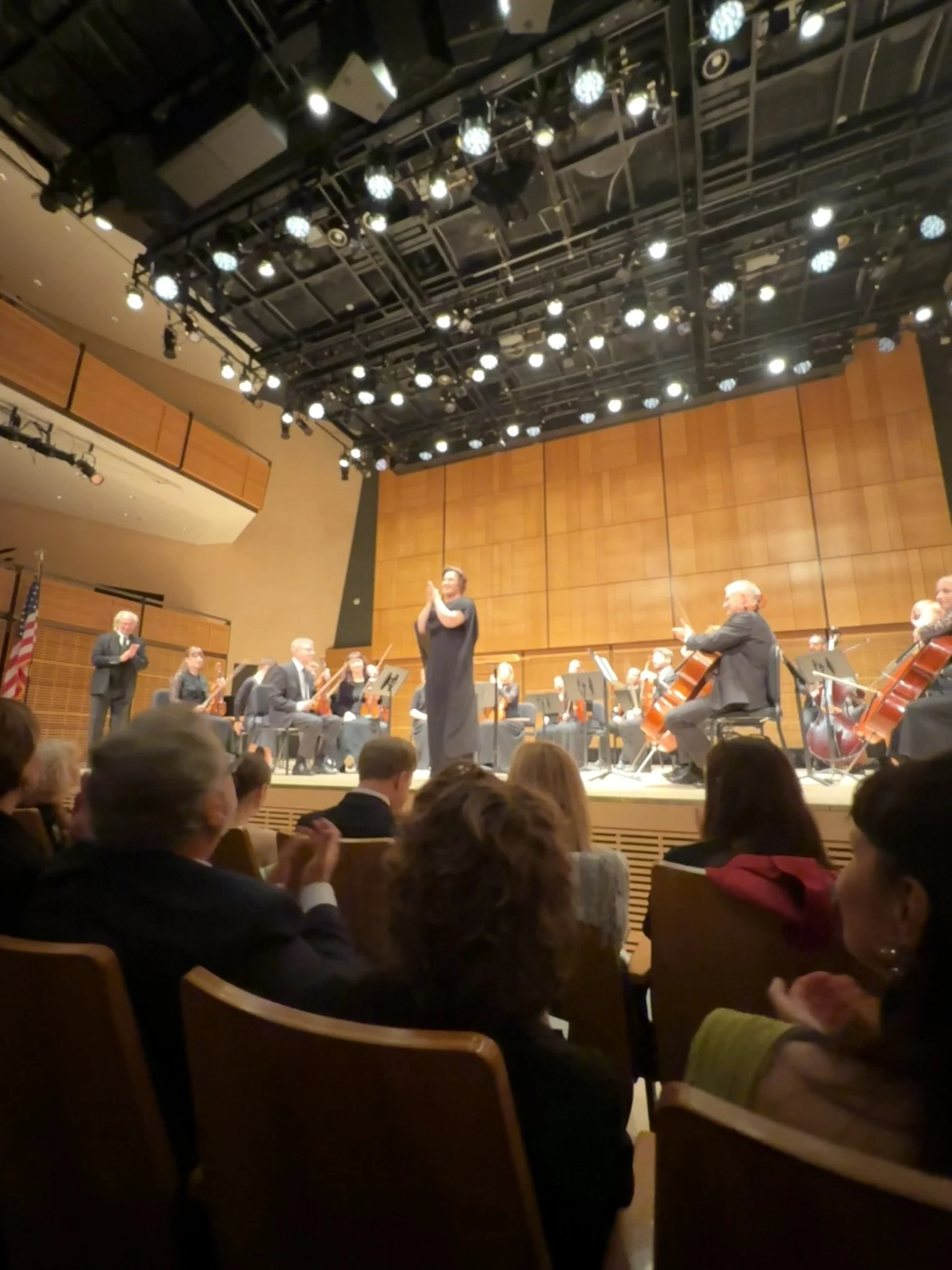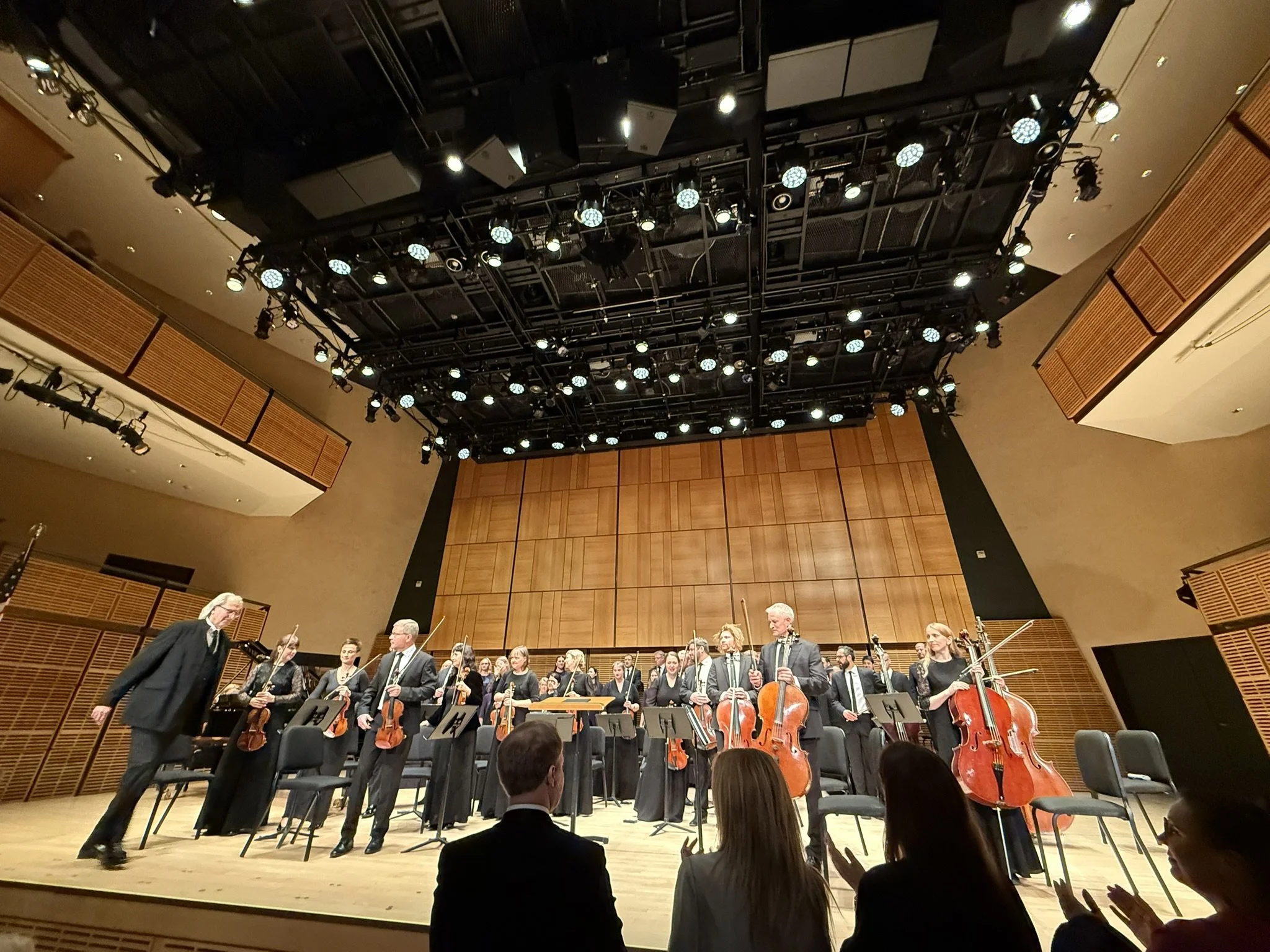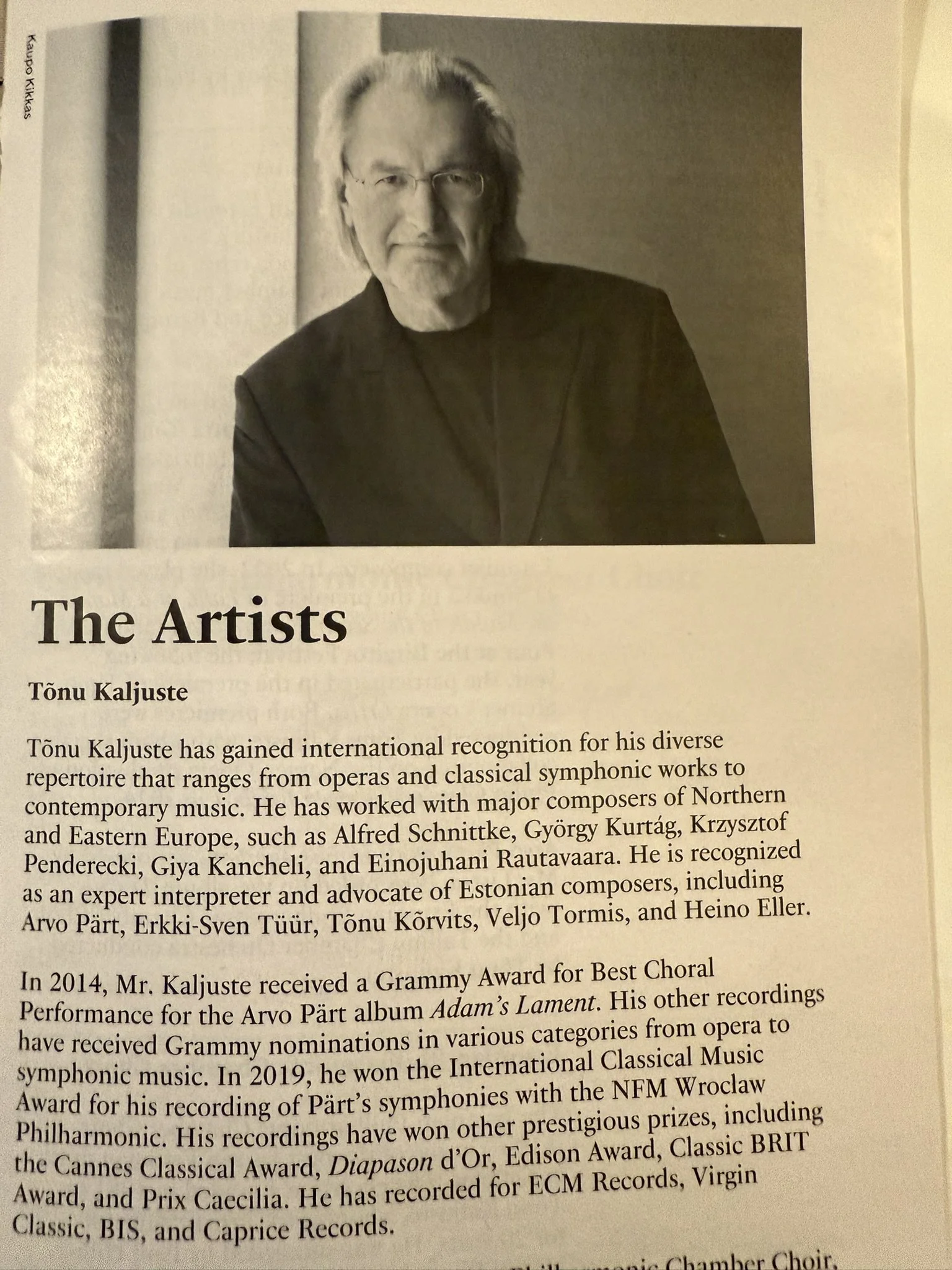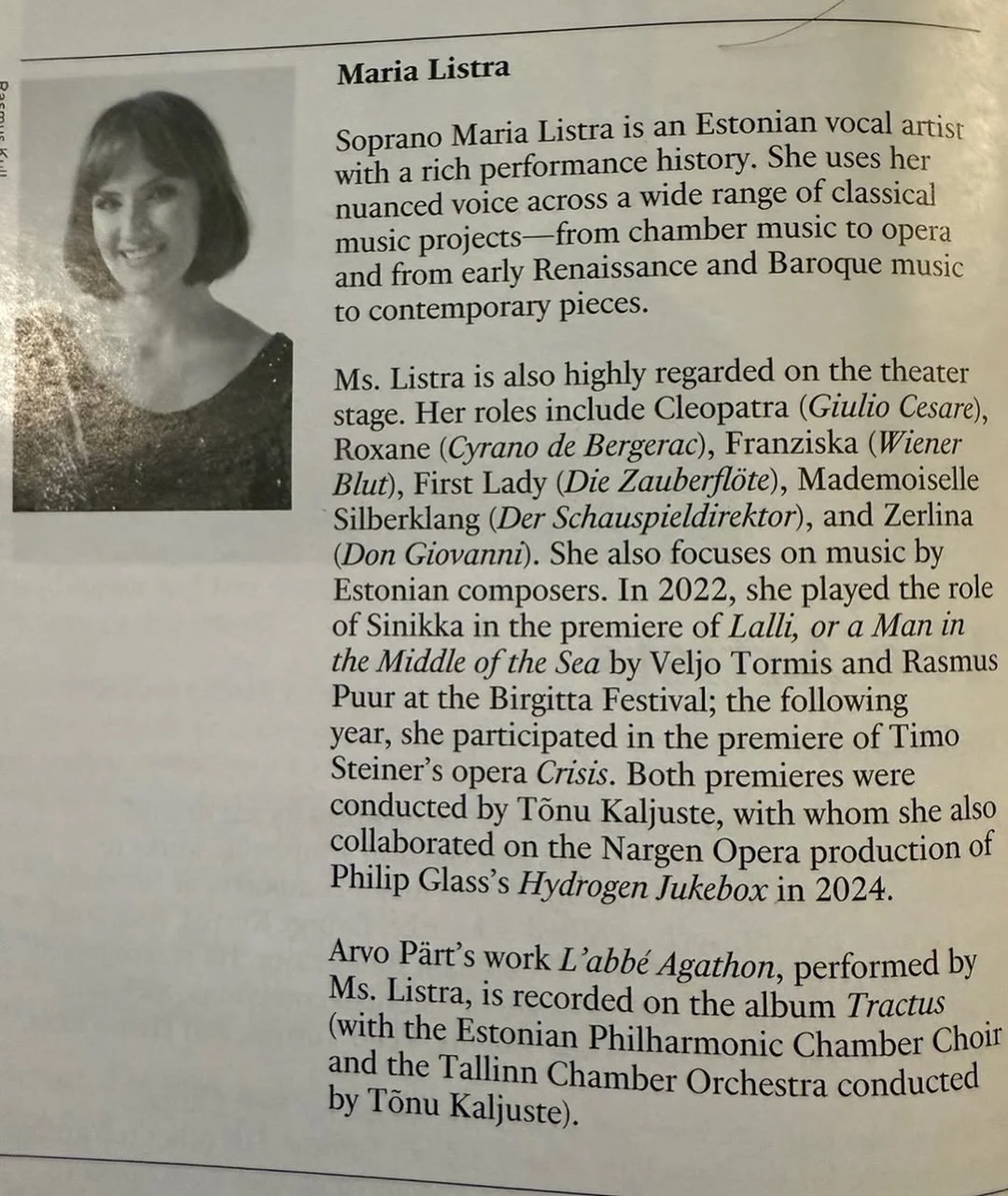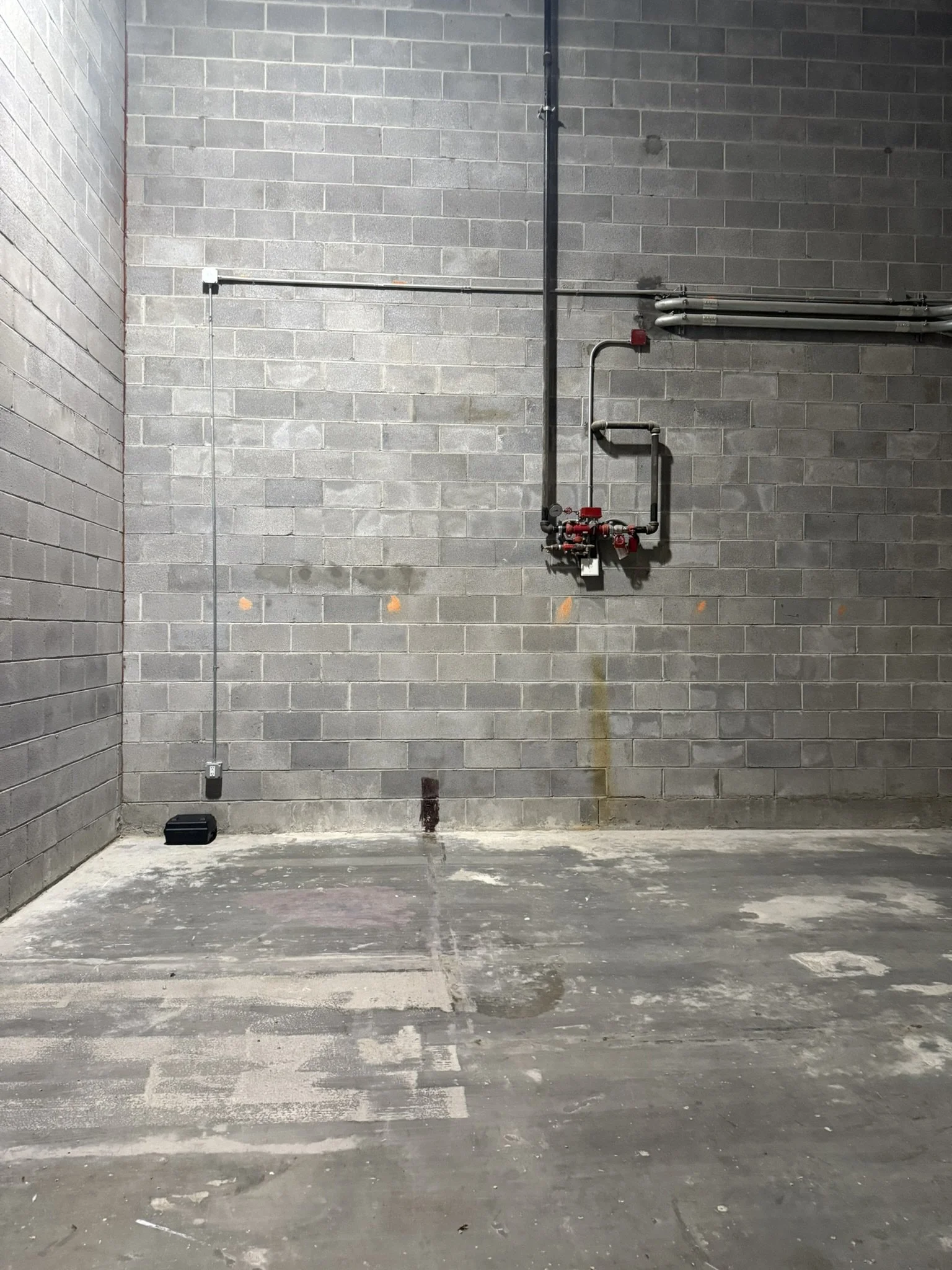Estonian Philharmonic Chamber Choir and Tallinn Chamber Orchestra’s all Arvo Pärt concert on 10.24.2025 at Zankel, Carnegie Hall.
Under the Soviet, Arvo Pärt said, "I had to find a musical language I wanted to live with." He searched for his own music in a restrictive environment. He tried 20th-century techniques like serialism, neoclassicism, and collage, but felt an "unbearable atmosphere of barbed wire." He discovered a crystalline spirit in medieval polyphony that resonates today, giving rise to tintinnabuli, in which triads ring like bells. His chants were banned in the Soviet Union, but they were highly acclaimed in Western Europe, leading him to emigrate to Vienna in 1980. He has lived permanently in Estonia since 2010. Compared to American minimalist music, Pärt's music thrives on silence, and his world resides in its stillness and resonance.
I don't have a true religious sensibility, so I find excellence or my curiosity in instruments and voices. From there, I explore my own voice and find understanding. I don't understand how different Pärt's music is from Russian Orthodox sensibilities. The difference between medieval serials and Pärt's music is clear. However, in the live performance, one's heart is captivated by the light of devotion that resides in the sound. In Pärt's music, the still voices and instruments, and the Pärt that resides in them, seep into one's body live from the dry Zankel's space. Listening to music is not about self; by listening, one absorbs the world, and one's understanding and actions become part of it.
Für Lennart in memoriam (2006) is a tribute to Lennart Meri, a friend and former President of Estonia. Meri means "sea" in Estonian—beginningless light and sea. From Zankel's dry sound, one is drawn into the orchestra's deep concentration, which guides a clear light and a sea of goodness. In L'abbé Agathon (2004), monk Agathon is asked various requests by a leper he meets on his way to sell small items in town, and he fulfills them all. He helps whoever the request is, and finds God in it. The patient then disappears, claiming to be a messenger from God. The strings continue their heavy gait, and finally, in a high voice, she declares that he was an angel of the Lord. Estonian soprano Maria listora proves that the human heart is not made of diamonds or the glitter of luxury brands. Humans are made of earth, and within that resides the spirit. Her portrayal of the monk Agathon is simple, dedicated, strong-minded, and kind-hearted—a beautiful performance. Her soaring vocal leaps, followed by a slight vibrato, evoke a vivid exchange between Agathon and his patient. Stabat Mater (1985 / rev. 2008) was arranged for three-part mixed choir and string orchestra. Pärt has said, "It's like the coming together of opposing elements, like volcanic lava flowing into water." In this piece, the voices and instruments barely blend together, and Pärt's truth resides in the silence. Maria's pain eventually transitions into acceptance and salvation. The strings symbolize darkness and anguish, their somber tones evoking suffering, while the chorus expresses prayer and light. The subtle shifts in the combination of voices create a rich variety of colors and textures. Magnificat (1989) is a modern translation of Renaissance polyphony. Pärt's classical polyphony, combined with the refined, transparent tintinnabuli sound, revives the sacred spirit in a contemporary setting. The smoothness is profound, and the resonance of the words evokes the awe, trembling, and silence felt at the moment of Mary's revelation.
The final piece is Te Deum (1985–2007), a large-scale work for orchestra and chorus. The "power of silence" in Pärt's music evokes a sense of holiness, awe, and the depth of prayer through its stillness.
Performers
Estonian Philharmonic Chamber Choir
Tõnu Kaljuste, Conductor
Tallinn Chamber Orchestra
Maria Listra, Soprano
Tallinn Chamber Orchestra’s deep concentration adjusting the venue air.
Maria Listra’s simple and strong, the warm faith on L’abbé Agathon.
Estonian Philharmonic Chamber Choir and all together on the stage after Te Deum.
Für Lennart in memoriam(2006)は友人であり、エストニア大統領であったレナルド・メリへの追悼。メリはエストニア語で「海」。始まりのない光と海。ザンケルの乾いた響きから、透明な光と善の海を導くオーケストラの深い集中に心が引き込まれていく。L’abbé Agathon(2004)アガトン修道士は、小物を町に売りに行く途中で出会ったハンセン病の人からいろいろなお願いをされ、全部叶える。相手が誰であれ助ける。そこに神を見出す。そして患者は自分が神の使いだと言い消える。ひたすら続く弦の重い足取りと、最後、高い声で彼は主の天使だったと告げ終わる。エストニアのソプラノ、マリア・リストラは、人間の心がダイヤモンドや高級ブランドの輝きからできていないことを証明する。人間は土からできていて、そこに精神が宿っている。彼女が歌う修道士アガトンは素朴でひたむきで、強い精神と優しい心を持つ。そこが美しい。まっすぐに伸びる声のリープと、後から少しだけビブラートをかけて、アガトンと患者の対話の生々しいやり取りを体験させた。
Stabat Mater(1985 / rev. 2008)は三部混声合唱と弦楽オーケストラに編曲された作品。ペルトは「これは、相反する要素が触れ合うようなもの。火山の溶岩が水に流れ込むようなもの」と語っている。この曲では声と楽器をほとんど融合させず、その沈黙にペルトの真実が宿る。そしてマリアの痛みが、やがて受容と救いへと移行していく。弦楽器は暗闇と苦悩を象徴し、沈んだ音色で苦しみを描き出すのに対し、合唱は祈りと光を表現する。声部の組み合わせを少しずつ変化させ、色彩とテクスチャの豊かな変化を生む。Magnificat(1989)はルネサンス期のポリフォニーを現代に翻訳した作品。ペルトは古典の多声音楽をティンティナブリの洗練された透明な響きで、聖なる精神を現代の響きで蘇らせている。その滑らかさは深く、言葉の響きがマリアが啓示を受けた瞬間の畏怖や震え、そして沈黙の感覚を体に染み込ませる。
最後は Te Deum(1985–2007)。オーケストラと合唱による大規模な作品。ペルト音楽の「沈黙の力」によって、静けさが神聖さや畏怖、そして祈りの深みを体感させた。

